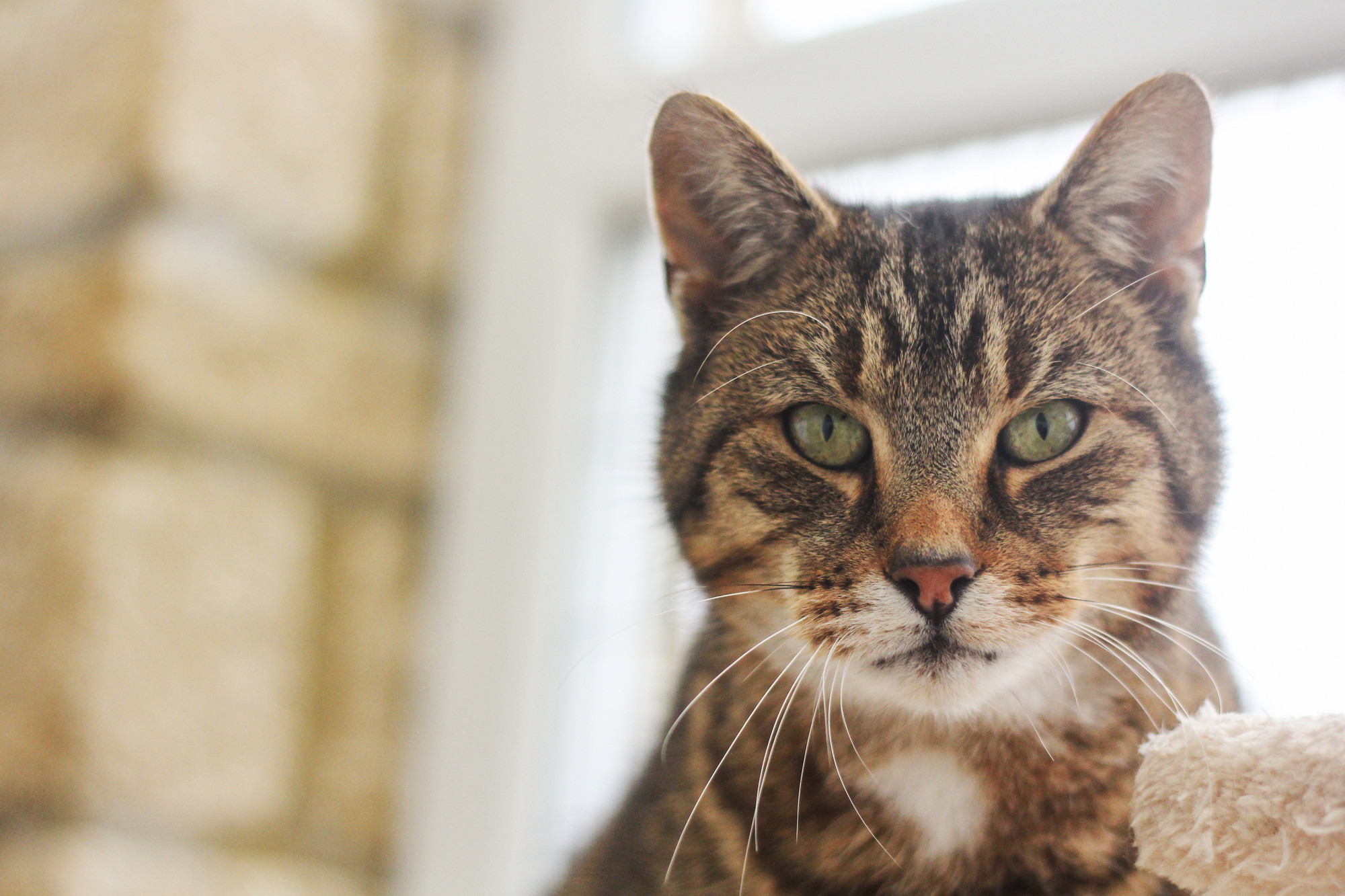
Why do cats have whiskers?
A cat’s whiskers have a much bigger purpose than just that of looking cute. From helping your cat navigate small spaces to judging the distance between things to make them the most graceful of jumpers, these special sensory tools are vital to your cat’s way of life.
The most prominent, obvious place you’ll see whiskers is on the side of your cat’s face, by their mouth. However, shorter whiskers can also be found above their eyes, jawline and on the back of their front legs.
What are whiskers?
Cats usually have around 24 whiskers on their face. These are not only thicker and longer than normal hair but they also sit deeper in the skin, attached to nerve endings and muscles which allow them to move their whiskers to sense their prey and understand the environment around them.
Why does my cat have whiskers?
Whiskers are a part of what makes a cat such a skilled acrobat.
Cats can’t focus on anything closer than around 30cm in front of them. So they rely on their whiskers to navigate the world directly in front of them.
Whiskers are the same width as a cat’s body and so perfectly serve as a sensory function, allowing cats to judge the distance between things and how far away objects are from their face and body, with the ability to detect the slightest vibration in the air. They can also move their whiskers to get a better sense of what’s around them and to indicate their mood.
Can I cut my cat’s whiskers?
A lot of people make the mistake of cutting their cats whiskers as part of their pets grooming regime. However, this is not a good idea as, without their whiskers, cats essentially lose their ability to ‘feel’ in front of them as accurately, which can leave them worried and a bit disorientated.
Their whiskers will grow back but it can be stressful for them in the interim period while they experience some loss of their spatial awareness. To put it into context, it would be a bit like us losing the feeling in our fingertips and so not being able to feel our way through the dark.
Whiskers and mood
Whiskers can even help you to understand your cat’s mood. Still, relaxed whiskers can mean that your cat is calm. Pushed forward can mean they are curious or excited and pushed back can indicate that your cat is anxious or scared.




